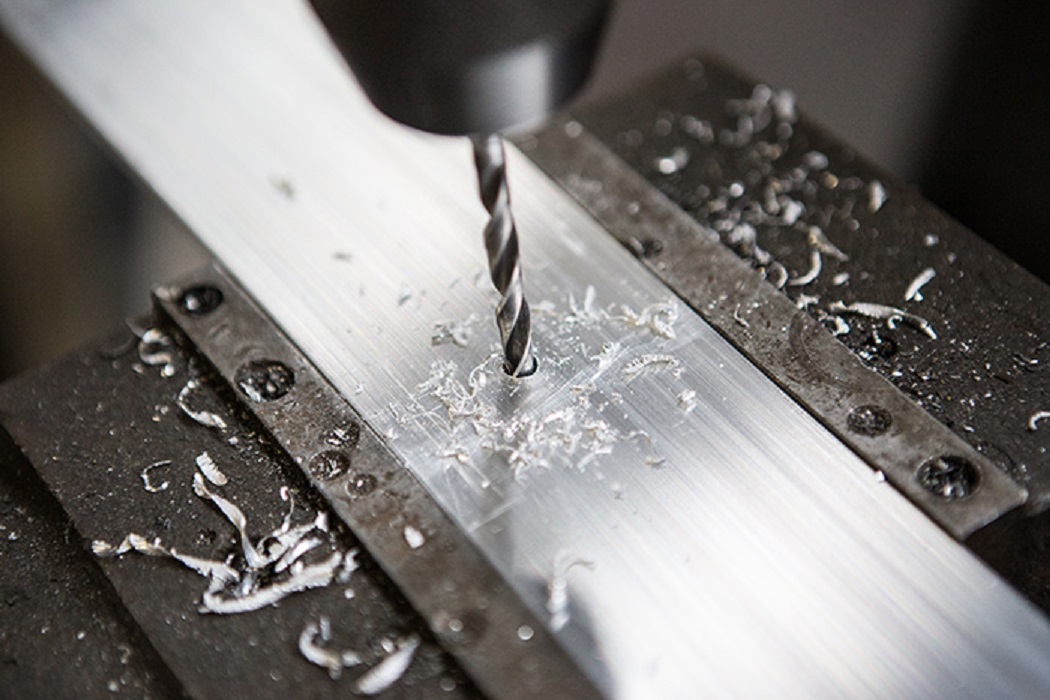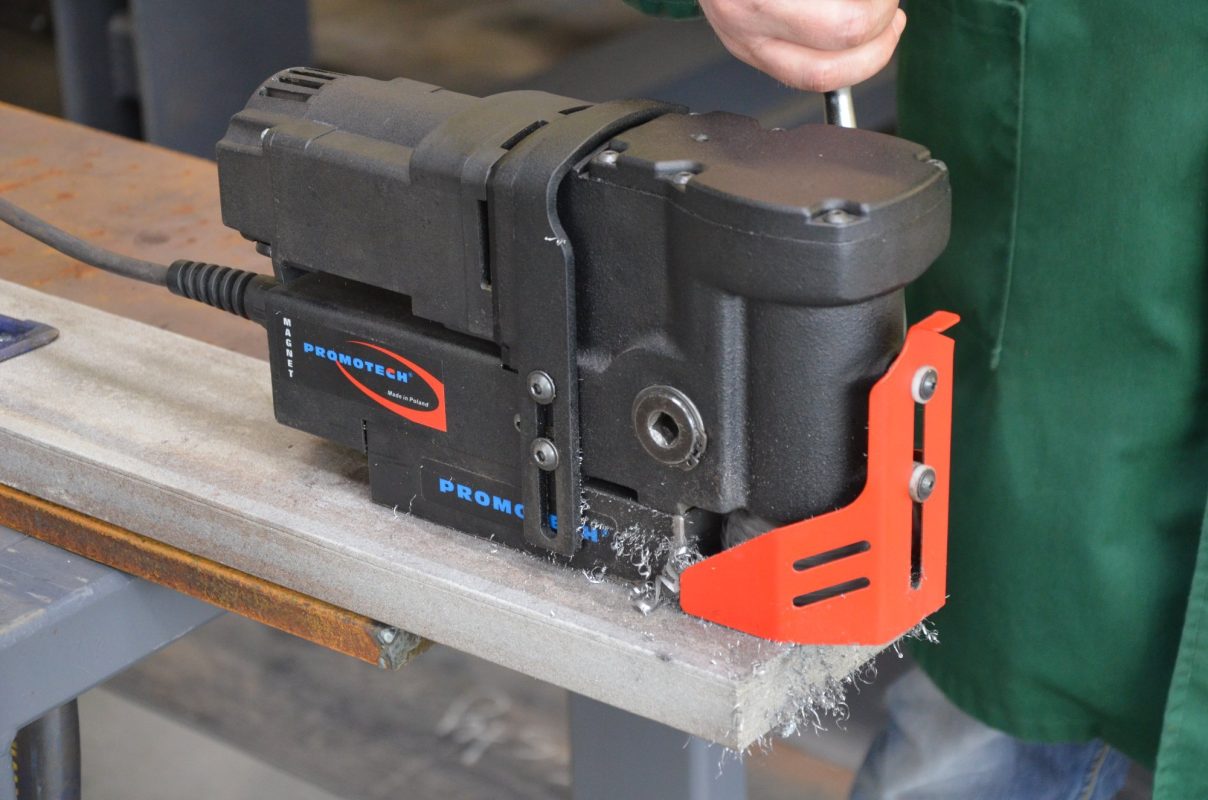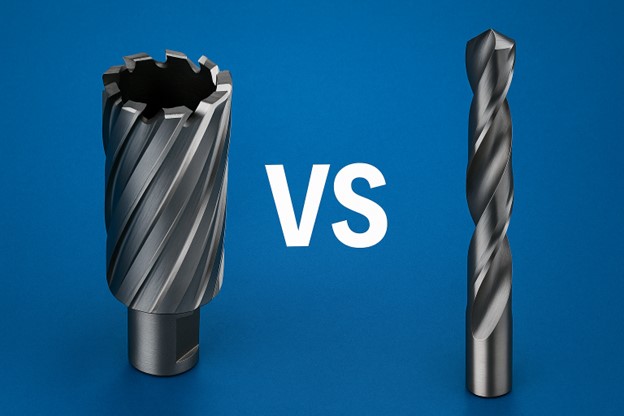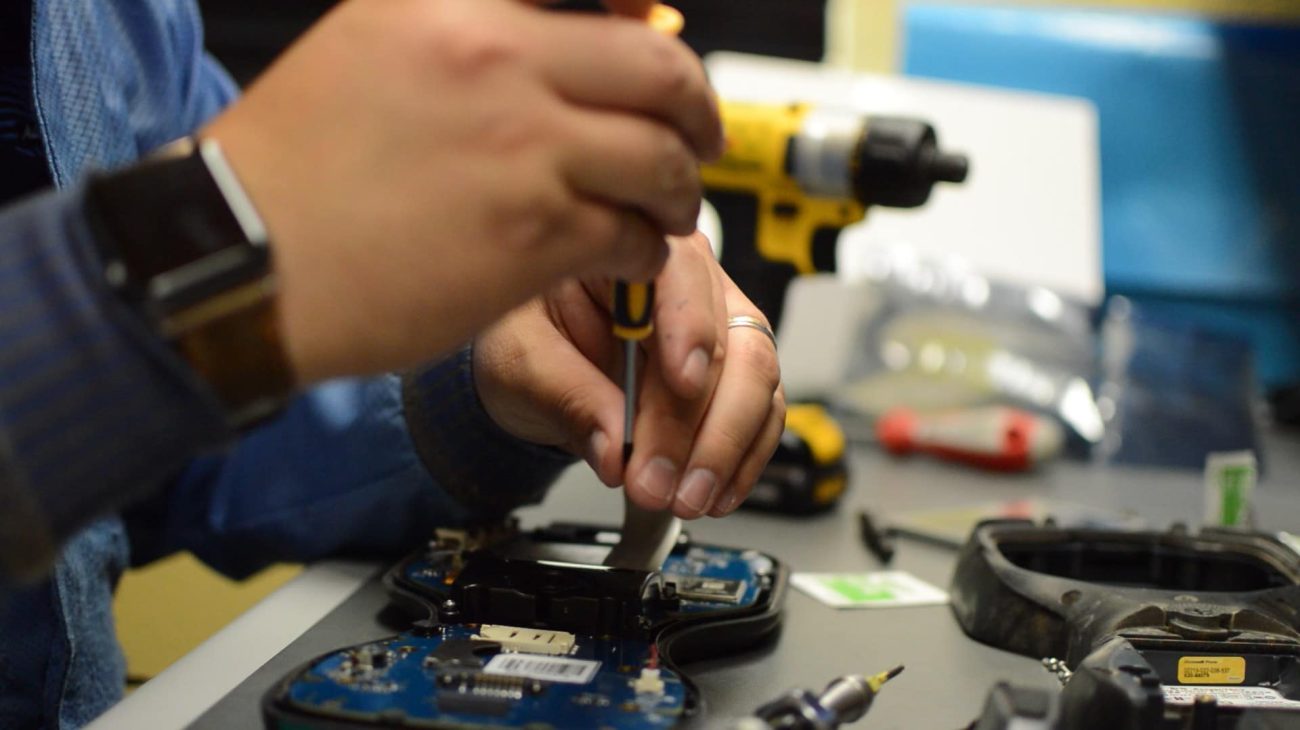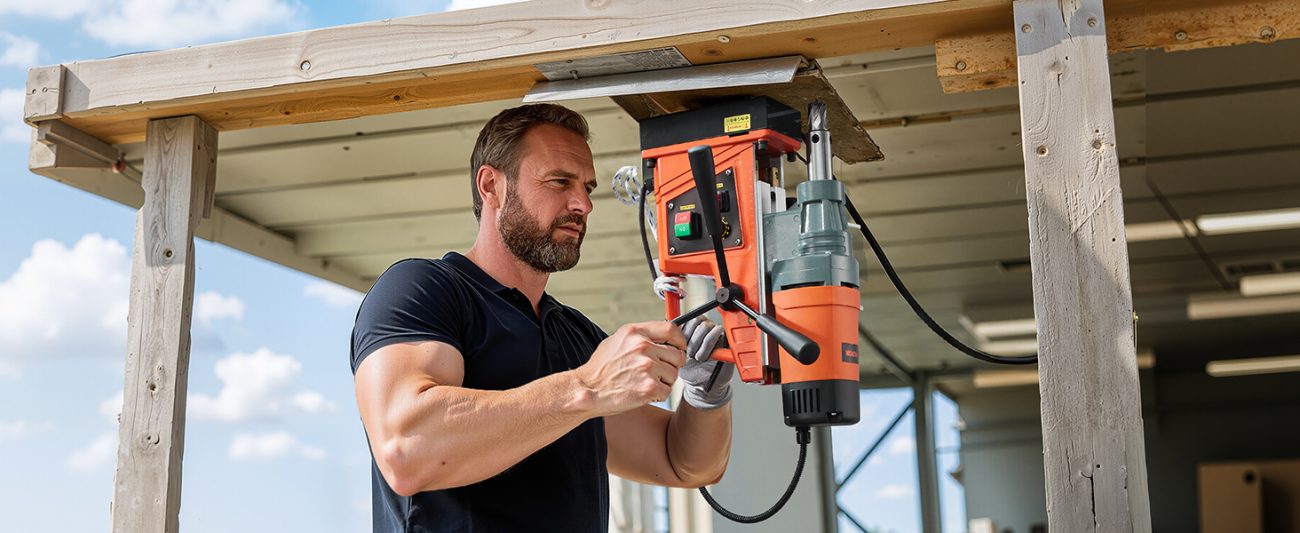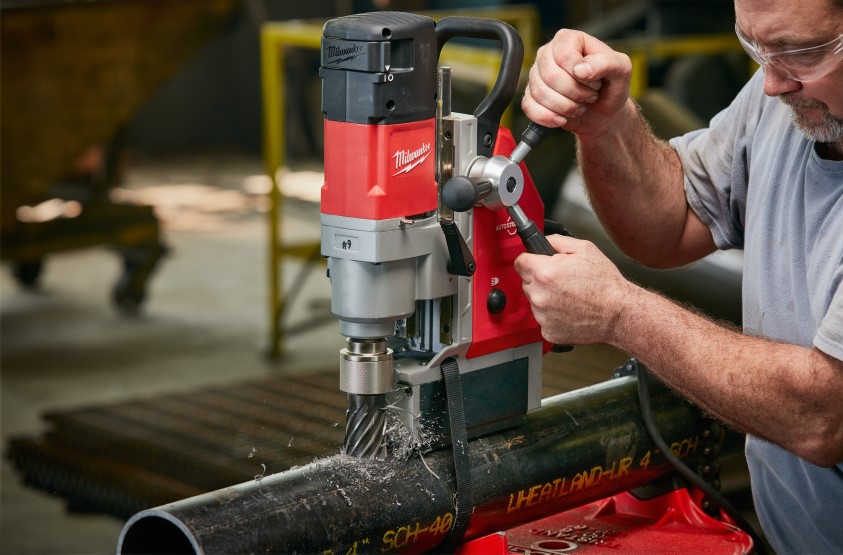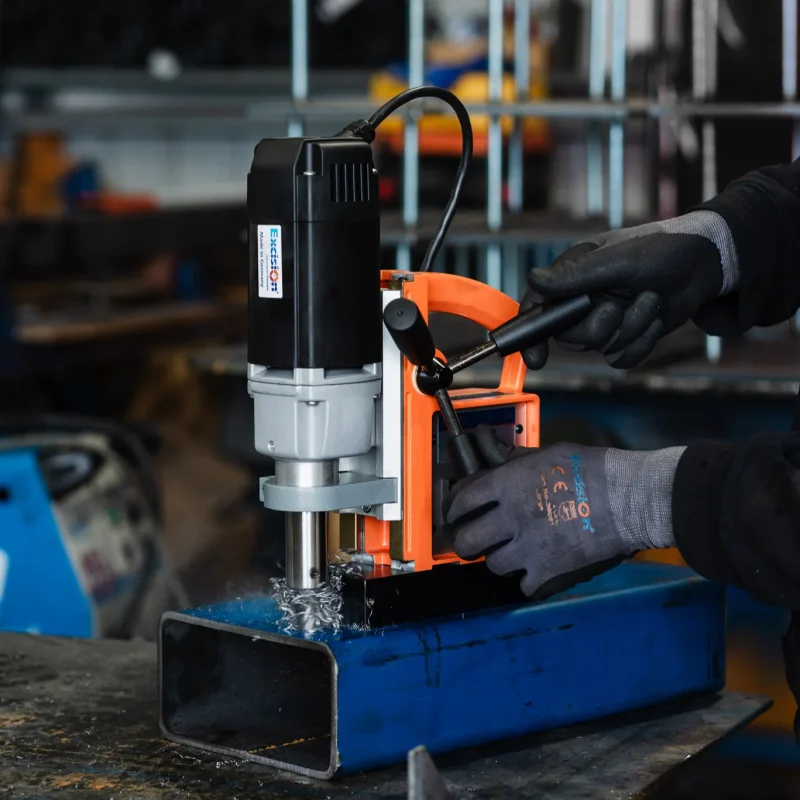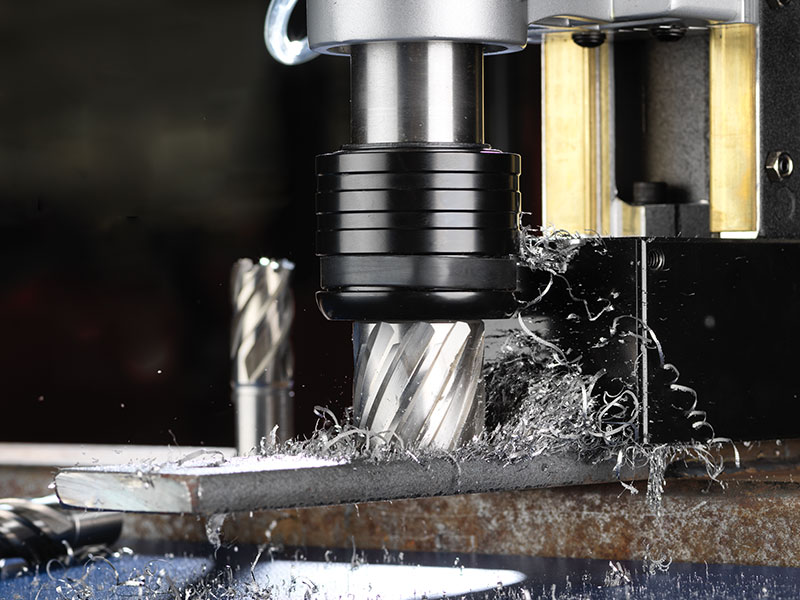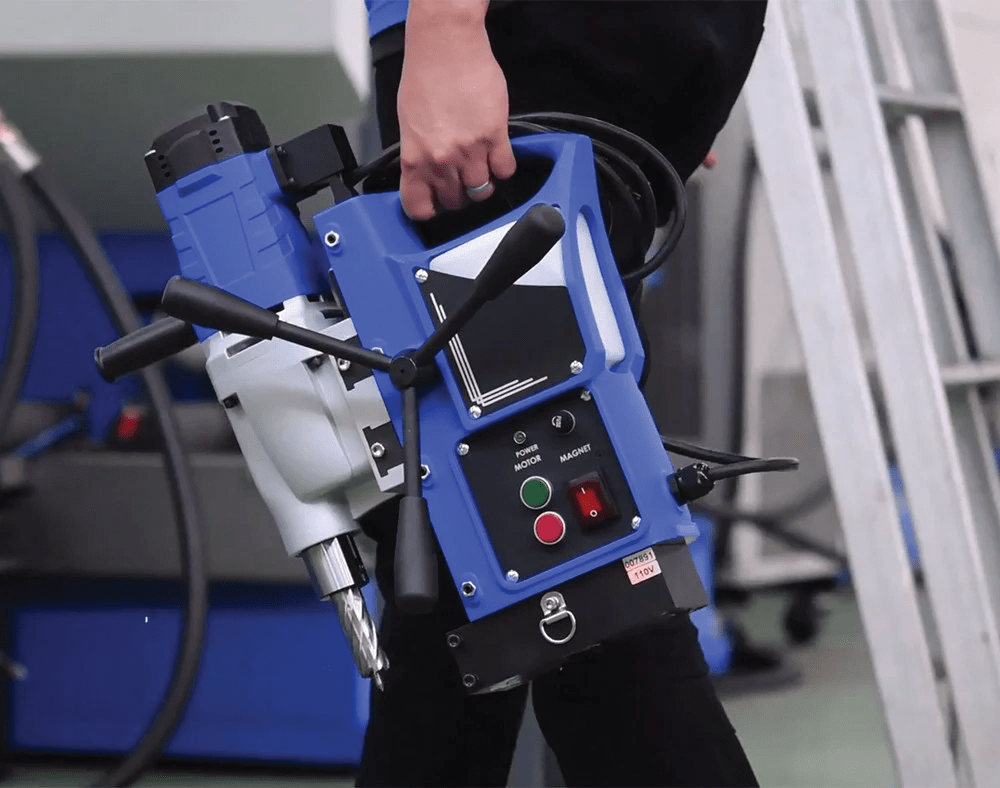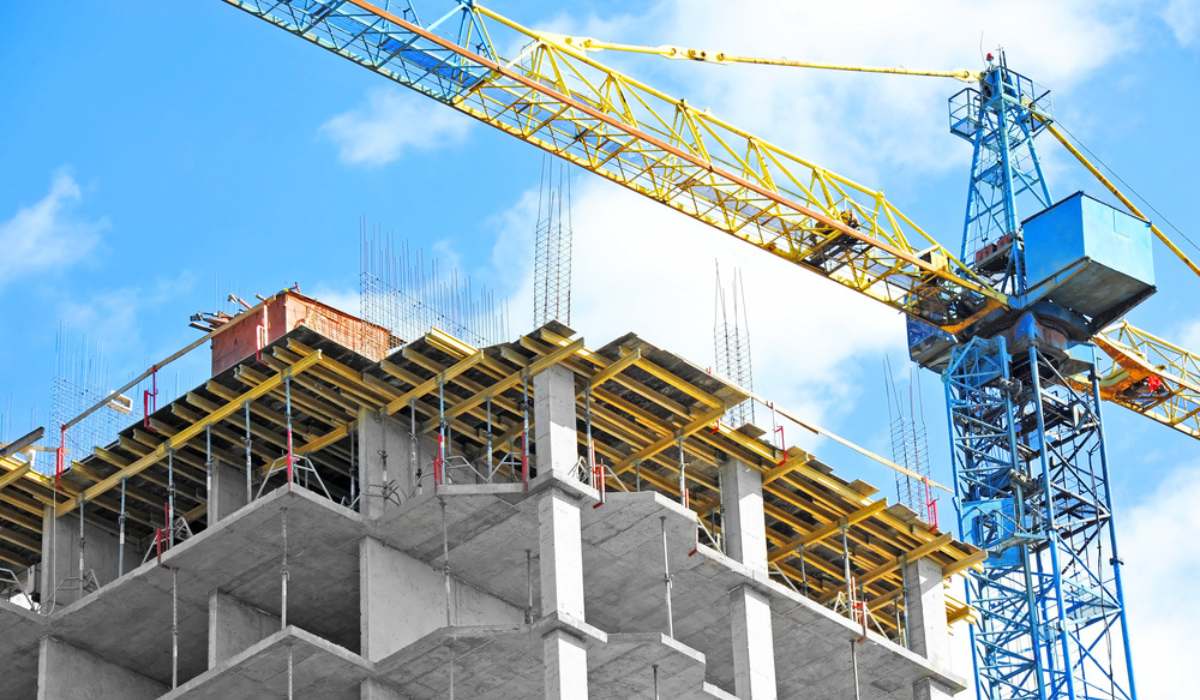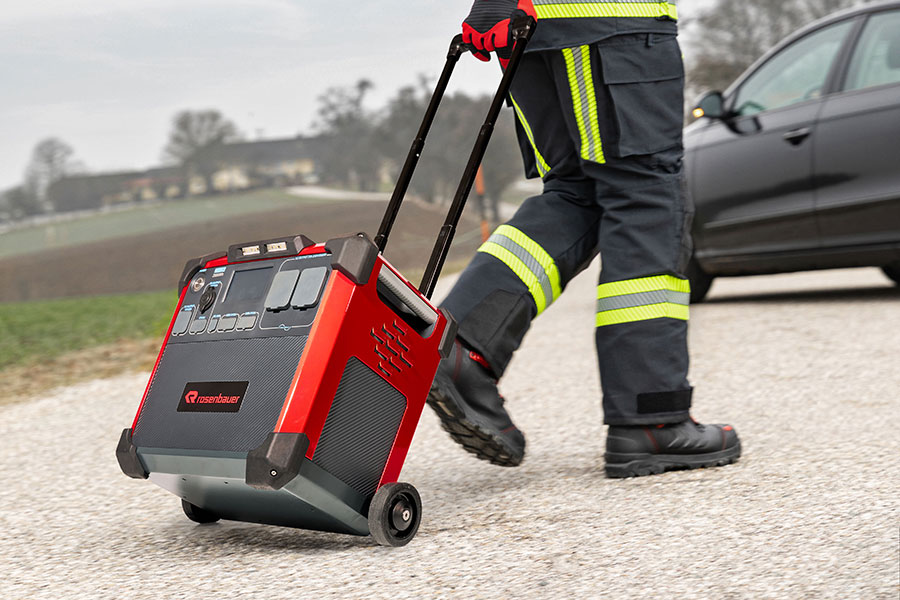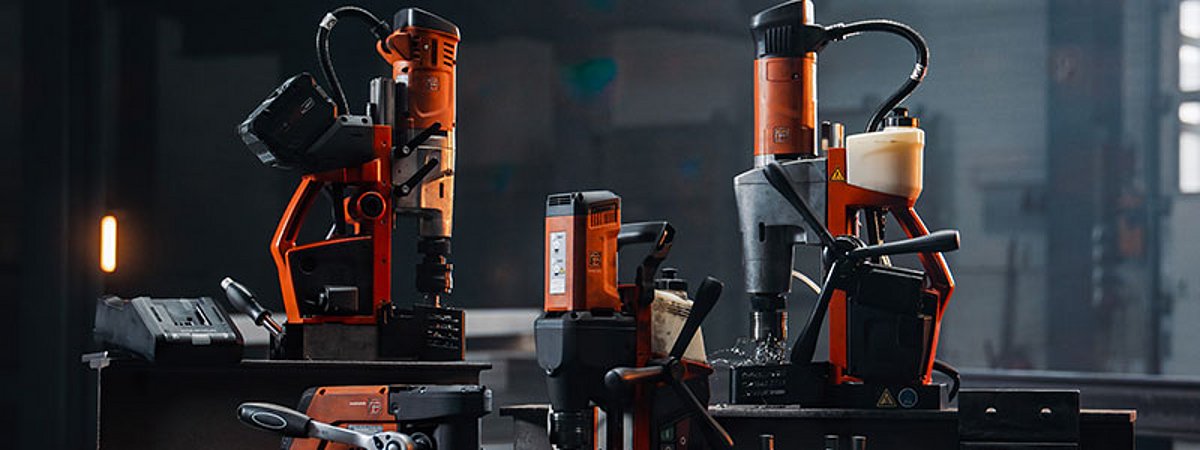Explosion-Proof Magnetic Drill Buying Guide for Oil and Gas Industries
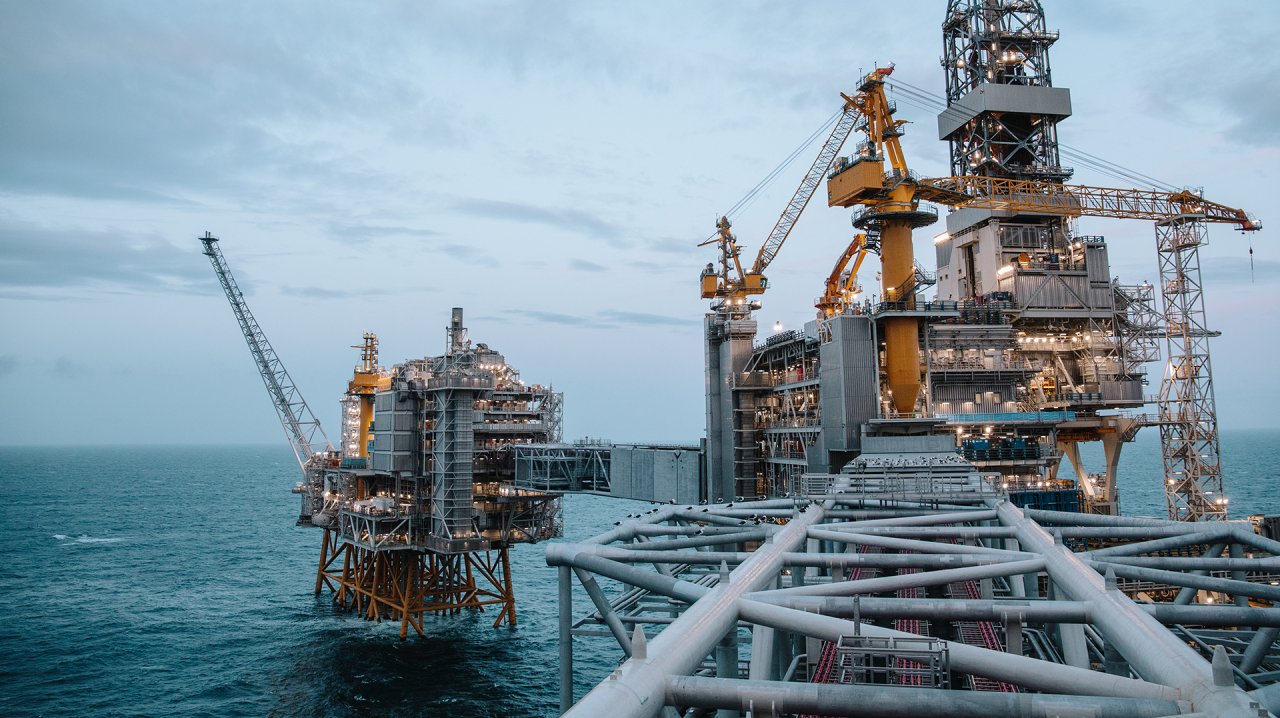
Explosion-Proof Magnetic Drill Buying Guide for Oil and Gas Industries
Introduction
In high-risk industrial environments such as oil, gas, and petrochemical industries, the use of safe and specialized tools is an absolute necessity. In areas where there is always a risk of gas leaks, flammable vapors, and explosions, employing an explosion-proof magnetic drill is not only a safety requirement but also significantly enhances the precision and quality of drilling operations. Making the right choice of this tool in oil-related projects can be the difference between a safe execution and an industrial disaster.
What Is an Explosion-Proof Magnetic Drill and How Does It Differ from Standard Models?
An explosion-proof magnetic drill is a specialized tool designed for drilling operations in high-risk industrial environments where flammable gases, toxic vapors, or explosive dust may be present. These drills are specifically engineered to eliminate any source of sparks or sudden heat during operation. Unlike standard magnetic drills that operate with electric motors, explosion-proof models are often powered by pneumatic (compressed air) or hydraulic motors. These systems prevent the generation of electrical sparks during startup or under load.
In addition to the motor, the body of these drills has unique safety features. They are typically constructed from spark-resistant alloys such as aluminum bronze or industrial brass, which do not emit sparks upon impact with metal surfaces. The power cables are insulated with flame-retardant and anti-static coatings. Even the switches, controllers, and electrical connections—if any—are housed in sealed, explosion-proof enclosures.
As a result, these tools are designed to safely function in environments containing flammable vapors, such as refineries, oil rigs, or gas transmission facilities, without introducing any potential ignition or explosion hazard.
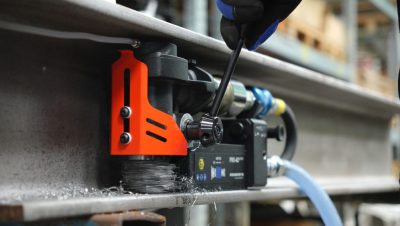
The Difference Between Explosion-Proof Magnetic Drills and Standard Models
Practical Applications in Oil, Gas, and Petrochemical Industries
The oil and gas industries are among the most complex and hazardous sectors, frequently dealing with pipelines, pressurized tanks, drilling platforms, towers, and large-scale metallic structures. In all of these operations, the explosion-proof magnetic drill plays a critical role by enabling precise and safe drilling without the need to move heavy components.
For instance, during the installation or maintenance of natural gas pipelines, it is common to drill directly into thick pipe walls on-site. In such cases, using standard drills could produce sparks near gas lines, posing a severe explosion risk. The same risk applies in refineries, where the presence of flammable vapors makes the atmosphere extremely sensitive to heat and ignition sources.
In offshore oil rigs, where space is limited, humidity is high, and operations often occur at height, lightweight and compact explosion-proof magnetic drills offer both safety and enhanced efficiency. These drills are used to install metal plates, bolted connections, reinforcement structures, or heavy equipment directly onto steel frameworks—eliminating the need to transport components to a drilling station.
International Safety Standards for Explosion-Proof Magnetic Drills
To be legitimately used in explosive environments, an explosion-proof magnetic drill must be certified by recognized international industrial safety authorities. The most well-known certification is ATEX (short for Atmosphères Explosibles), which serves as the primary safety benchmark for anti-spark tools in the European Union.
A drill that carries ATEX certification has undergone rigorous testing for temperature resistance, pressure endurance, shock durability, and spark-free operation under hazardous conditions. This certification is typically marked on the tool’s nameplate with codes such as ATEX II 2G Ex db IIC T4 Gb, where each part of the code specifies a particular protection class.
In the United States, the NEC (National Electrical Code) and its Class I Division 1 or 2 classification system are used to regulate the use of equipment in areas where flammable vapors are commonly or occasionally present.
Another globally recognized standard is IECEx, which provides a unified international framework for certifying equipment used in explosive atmospheres. This standard is acknowledged by several countries including Australia, South Korea, and various Gulf states.
When purchasing an explosion-proof magnetic drill, verifying the presence of these safety certifications on the device body or in the product catalog is crucial. Without them, even a professionally built drill may not be technically approved for use in hazardous industrial zones.
Advantages of Explosion-Proof Magnetic Drill Over Traditional Drilling Methods
In the past, drilling operations in oil, gas, or petrochemical projects were often carried out using hand tools, conventional electric drills, or even pre-fabricated components. However, these methods not only posed serious safety risks but also slowed down project timelines, increased errors, and raised operational costs.
The explosion-proof magnetic drill, with its advanced engineering and high safety standards, is now considered an ideal alternative to traditional approaches. It offers significant advantages that directly impact the efficiency and safety of industrial operations:
- Significantly Enhanced Safety: The anti-spark, heat-resistant, and electrically insulated design ensures safe operation in explosive environments without the risk of ignition.
- High Drilling Precision: The magnetic base provides exceptional stability on metallic surfaces, resulting in more accurate and perfectly aligned holes with minimal deviation.
- Portability and On-Site Operation: There’s no longer a need to move heavy components to a fixed drilling station. The drill can be attached directly to the surface and operate in place.
- Time and Labor Cost Efficiency: With just a skilled operator and no need for large support teams, drilling can be completed efficiently.
- Extended Equipment Lifespan: Precision drilling minimizes wear on bolts, nuts, and structural joints, thereby prolonging the service life of mechanical components.
In environments where even a minor error could lead to catastrophic and costly incidents, choosing the right tool—such as an explosion-proof magnetic drill—can safeguard not only human lives and equipment but also the reputation of the project execution team.
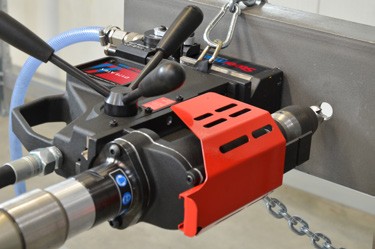
Advantages of Explosion-Proof Magnetic Drill
Key Factors to Consider When Buying an Explosion-Proof Magnetic Drill for Oil and Gas Projects
Choosing the right explosion-proof magnetic drill goes beyond just verifying its spark-resistant design. To ensure the tool truly meets your project’s demands, several technical and operational factors must be assessed simultaneously. Below are the most important considerations when purchasing this specialized equipment:
- Type of Motor (Pneumatic or Hydraulic): If your project site has access to a powerful air compressor, a pneumatic model is recommended. Otherwise, hydraulic models offer more stable performance, especially in offshore rigs or remote locations.
- Drilling Power and Capacity: Make sure the drill’s motor can handle the thickness and hardness of the metal components. Some models are limited in terms of maximum drilling diameter or depth.
- Weight and Ergonomic Design: When working at heights or in confined spaces, the drill’s weight and compact design become critical. Even a one-kilogram difference can affect safety and usability in elevated work areas.
- Certified Safety Standards: Never use a unit that lacks valid ATEX, NEC, or IECEx certifications for explosive environments. These markings should appear on the tool body or product catalog.
- Tool Compatibility and Accessory Support: Models featuring universal shaft systems offer greater flexibility for changing drill bits, taps, and accessories.
- After-Sales Support and Spare Parts: These drills are usually imported and require access to original spare parts and experienced technicians for maintenance.
All these factors should be evaluated together—not in isolation. In critical environments like oil and gas projects, purchasing an explosion-proof magnetic drill is not merely a technical decision but a strategic and safety-critical investment.
Why Rahmani Magnetic Drill Store Is the Top Choice for Industry Professionals
In projects that operate under the most sensitive and high-risk industrial conditions, selecting the right tool isn’t just a purchase — it’s a critical decision that impacts safety, quality, and execution time. Rahmani Magnetic Drill Store, with over two decades of specialized experience in supplying industrial drilling equipment, is recognized as one of the most trusted sources for magnetic drills in Iran.
By offering top international brands, a wide range of models, original spare parts, and real technical support, Rahmani has consistently supported major industrial projects across the country. The store’s technical advisors are ready to help you choose the most suitable explosion-proof magnetic drill or standard model, based on your project’s environment, technical requirements, and safety considerations — whether you’re in a workshop or deep inside a complex industrial facility.

